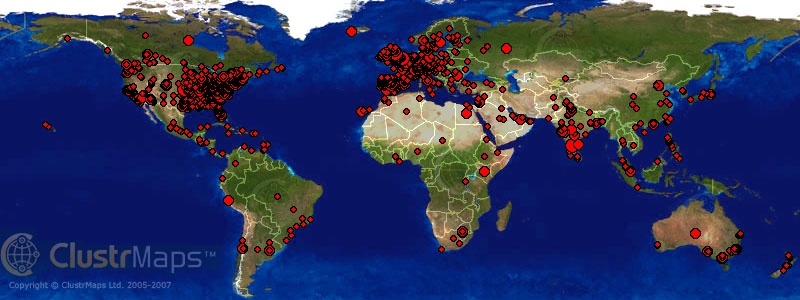It’s almost two years ago that I “cleaned house” at LinkedIn, dropping from 500+ connections to about 300.
I had no clue about Dunbar’s number ( the maximum number of people one can maintain active, stable social relationships with, estimated at 150 by British anthropologist Robin Dunbar), I simply felt I had been to open accepting invitations from unknown people, and as a result, I barely recognized names on my LinkedIn contact list. I thought the very idea of LinkedIn was that it should be an online reflection of my real-life relationships.
Fast-forward two years, now we have FaceBook, Plaxo Pulse, Twitter, and a zillion of other places, and get inundated by friends request from new and new “social networks” never heard of before. Perhaps the rules changed a bit – people do “befriend” each other in cyberspace, without having met first. I can accept that to a certain extent, but I still think Dunbar’s number has merit, even in today’s world. Of course it’s not fixed at 150, for some it may be 80, for the uber-social ones 3-4-500? JP Rangaswami, blogging at Confused of Calcutta, (also pioneering adopter of social software as former CIO at Dresdner Kleinwort Wasserstein) thinks his digital Dunbar number is higher than 150:
I’ve sensed that I have a Dunbar number of around 300 in the digital world, and I’ve been delighted to find I know most of the steady ones. Over the years I’ve actually met most of the community of readers, usually at conferences. The face-to-face contact, in turn, leads to a deepening of the relationship, and we land up creating and developing links in FaceBook and Twitter.
JP is wondering if there’s a trend here, and asks his readers:
How many FaceBook friends do you have, how many regular readers of your blog, how many followers in Twitter, do you see a correlation between the three, if not why not, and so on. Do you tend to meet a core of this number on a face-to-face basis, if not why not?
I’m not a regular reader of JP’s blog – discovered this post via Anne Zelenka at Web Worker Daily, but even if I was a subscriber, I would not consider myself a “friend”. I might want to follow his ideas on Twitter (if I was twittering at all) but that’s still passive mode. I think this commenter to Anne is right:
I don’t think that “following” people on Twitter would be considered “stable social relationships”. A social relationship implies a two-way street, and in my book, one that I value with some significance. That’s not to say that online social tools can’t be part of real relationships, but you can’t just add up all the numbers and think it means anything.
Now, if I commented on JP’s blog several times, and he responded, we’d establish a form of conversation, which, over time would allow us to get an insight into each other’s mind – i.e. getting to know each other to some extent. Perhaps at that point it would be appropriate to “befriend” each other on FaceBook. (Not that I actively use FaceBook, which is increasingly becoming an advertising platform, and even before that I had found it somewhat of a time-waster.)
I still don’t think we’d be ready to become LinkedIn contacts, because that network is all about trust, and recommending / referencing “friends” in a business context. Call me old-fashioned, anti-social, but I think that level of trust requires more of a real-life relationship, so my LinkedIn numbers would be close to my Dunbar-number, the number of active social contacts I am able and willing to maintain.
Before they cracked down on them, LinkedIn got polluted by contact-hunters, so-called superconnectors who amassed thousands, in a famous case 16,000 contact records. Note the emphasis on records. It’s just that. Data records, not real relationships. FaceBook (possibly learning from LinkedIn) limits the number of contacts to 5,000, which some users, including Robert Scoble find inadequate:
I think it sucks because it isn’t scalable and falls apart at 5,000 contacts. It pisses me off more and more every day because of that scaling wall.
Robert is a celebrity, and the 5000 or so are in his fan-club. Just like the Twitter example above, he has followers, not active friends. Hyper-social or not, he also has a Dunbar-number. It may be in the higher hundreds, but not in the thousands. For the rest of us, non-celeb types, I still believe less is more, and our online networks should reflect our real-life one, instead of being an inflated collection of data records. (This line became Doc Searls’ Quote du jour ).
).
Finally, somewhat off-topic, here’s an observation from JP’s post: he’s using to ClustrMaps to monitor and illustrate where his readers come from. I understand the concentration in Europe, and also in the US, but what I am amazed at is the picture inside the US: what is this magical East / West divide? How come his readership drops so significantly in the Western half of the US?

Update (5/29/08): How Many Friends is Too Many? asks Josh Catone @ ReadWriteWeb .



Recent Comments